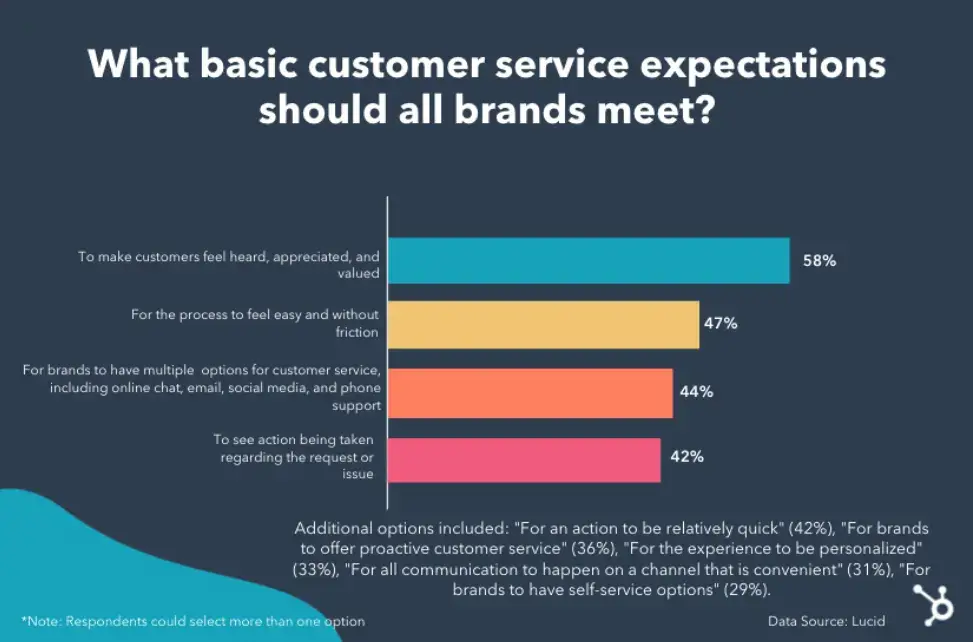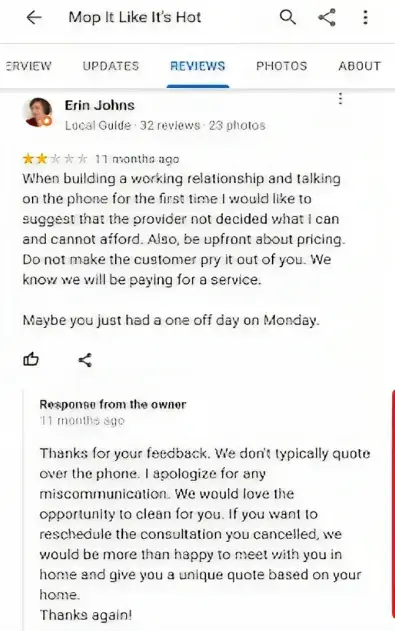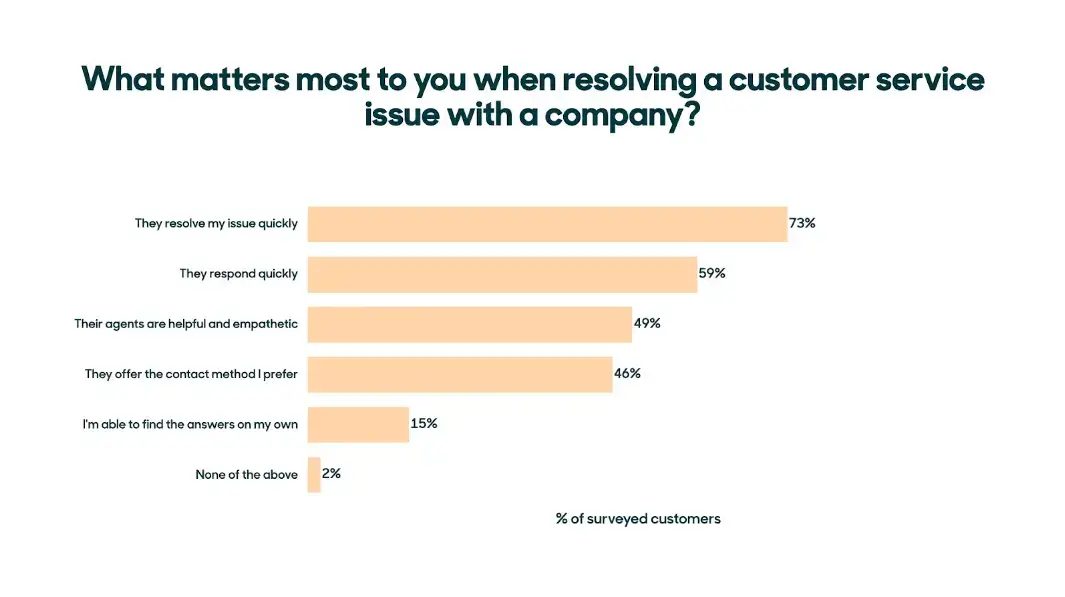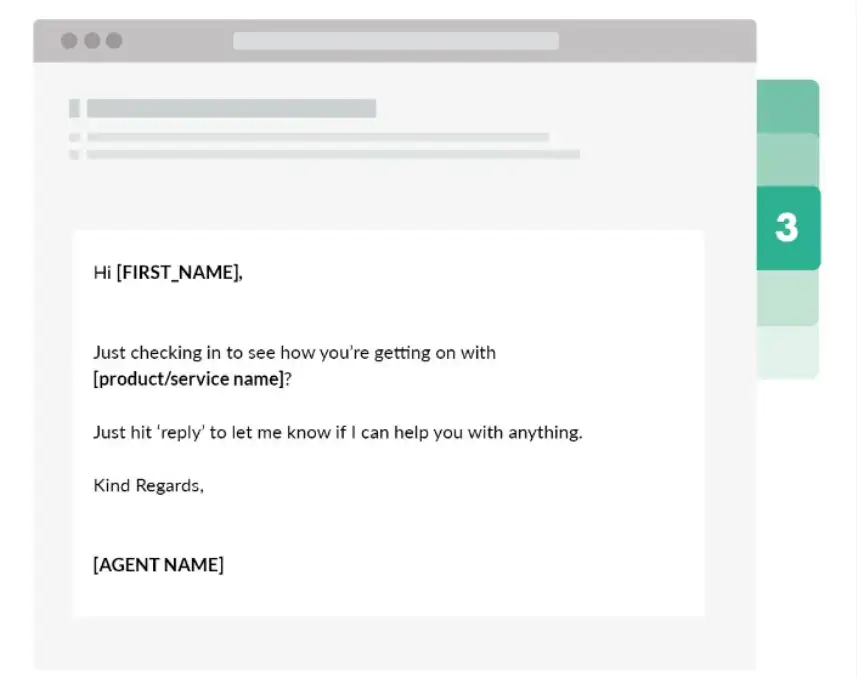Interactions with your customers can make or break your business.
It’s important to ensure customer experiences are managed carefully, especially now that consumers have many different service providers and products to choose from.
If you do not, you run the risk of customer dissatisfaction. That said, how do you prevent and manage customer dissatisfaction when it does arise? Here are four tips:
Skip to:
- Make Your Customers Feel Heard
- Respond to Negative Feedback
- Resolve Complaints Quickly
- Follow Up After Resolution
Explained simply, customer dissatisfaction is when a customer has become unhappy with your brand.
Some reasons for customer dissatisfaction include poor service delivery, negative product experience, and other unmet customer expectations. This situation can worsen when unhappy consumers tell friends and family about their bad experiences.
An estimated 13% of customers who have a negative experience with a brand will share it with 15 people or more.
That’s quite a lot of people. They don’t even include the people their complaint can reach if they share it on public channels like social media.

1. Make Your Customers Feel Heard
One surefire way you can avoid overall customer dissatisfaction is to make your customers feel valued. This has been proven.
When asked in a survey what they expect from brands, most consumers said they want the brand to make them feel heard.

In other words, you must be proactive in seeking your customers’ opinions.
Collect feedback through customer service chatbots or a consumer satisfaction survey sent via email to your customers. Besides, you can use the results of the survey to your advantage.
If the feedback is positive, you can just continue doing what you’re doing.
You can also use positive customer reviews as part of your digital marketing assets, assuming your respondents allow it. They’re a great form of social proof. Check this out.

The above page for professional dishwasher repairs in Melbourne does a great job of showcasing positive feedback from customers.
So, anyone who sees these positive reviews will definitely engage their services. Now what do you do with the negative feedback the concerned customer shared in confidence? Follow the tips in the next sections.
2. Respond to Negative Feedback
What if, despite your best efforts, someone rants about your brand?
You may encounter this type of feedback as negative comments on your website and social media pages or as bad reviews on review sites. You may also get this negative feedback from your email survey results.
Well, one way you can assuage unhappy customers is to respond to the negative feedback. You want to respond quickly as well.
Over half–or 53%--of customers expect brands to respond to negative reviews within seven days. One in three consumers have a shorter time frame of three days or less.
Take this, too, as an opportunity to humanize your brand. That means you must be sensitive in your responses. Show the customer that you recognize their discomfort.

See how the business owner above does it? They thanked the customer for the feedback and apologized for any miscommunication.
You can see they put themselves in the shoes of the angry customer when writing their response.
In your response, provide a plan of action as well. Tell them the specific steps you’ll take.
Also, give a timeline for when the issue will be resolved. When giving a timeframe to resolve the issue, make sure, though, that you can justify to the customer why it would take that long.
Assume a customer complains about the limited-edition headphones they bought from your store. In your response to the complaint, you tell them you’ll resolve the issue in two weeks.
You can tell them this is because you have to contact your main supplier in X country, which will then have to ship the headphones all the way to your office in California.
Only then will you be able to send the headphones to them.
When you respond quickly and with empathy, you show your genuine concern for the experience of the customer.
And when you’re transparent about how you plan to address their concern, you show you’re on top of the situation and that all is not lost for them.
The damage may have been done, but your customer may still give you plus points for your response.
Moreover, if you’re replying on a public platform like social media, other potential customers will also see how well your brand interacts with people, even if they’re angry consumers. That, again, is good for your brand reputation.
3. Resolve Complaints Quickly
Responding to negative feedback isn’t enough, though. Of course, you still need to address your customer’s complaint.
Your “Thank you for the feedback. We apologize for the inconvenience” won’t mean anything if you don’t make an effort to address the root of their customer dissatisfaction.
When resolving their complaints, you can’t take your time either.
In this survey, a staggering 73% of respondents said they want their issue resolved quickly.

But what exactly does “quickly” mean in this context? There’s really no hard-and-fast rule.
If the unsatisfied customer issue isn’t complex, it should take only hours to resolve. Only a few companies appear to be able to pull this off, though.
In the United Kingdom, for instance, only an average of 15% of customer complaints were resolved within 24 hours. If you can do what they did, then expect subsequent rave reviews from your customer.
What if the issue is more complex?
For as long as you resolve the issue within the timeframe you gave the dissatisfied customer, you should be fine. As you resolve their complaint, you can even throw in a little extra something just to try to compensate for all the damage.
For instance, in our headphones scenario above, why not send a 25% discount voucher they can use in their next purchase in your electronics store as well?
4. Follow Up After Resolution
Following up with a customer after resolution shows you value and respect your relationship with them.
Seeing as 88% of customers value brand experience just as much as they do the product or service, it’s important to consider this.
You can include a few things in your follow-up communication with customers.
The first is a thank you message. Thank them for their patience throughout the resolution process. You can also ask them for feedback about your customer support system.
If you had to replace their product, ask them to share their opinions about product quality as well. You can take the opportunity to be proactive and ask if they need anything else.
See this follow-up example below:

Lastly, consider including helpful resources in your follow-up message(s).
How about some articles and guides on how to get the most out of the replacement product, for example? If you take the time to send them these, you reiterate that, despite possible shortcomings, you do care about how customers experience your brand.

Ultimately, all is not lost when there’s customer dissatisfaction. You can still make it right by providing a good customer experience when resolving their issues overall.
This won’t just help make your brand stand out. As the image shows above, it can help you bring in more revenue, create happy customers, and enhance customer loyalty.
Conclusion
To succeed as a business, you want to prevent customer dissatisfaction. If a few complaints do arise, you also want to know how to handle them.
You learned four tips to prevent and manage customer dissatisfaction in this article. First, you need to be proactive.
Make consumers feel heard by collecting customer feedback and acting on it before they even have the chance to complain in public. Also, respond to negative feedback. You want to do this in the shortest possible time.
Respond to negative feedback with empathy as well. Lastly, follow up with your customers after resolution. Thank them for being patient and giving your brand a chance to make things right.
Follow this guide. You’ll be able to resolve customer dissatisfaction issues effectively, ensure satisfied customers, and, ultimately, stand out from the crowd.
Author Bio
James Rob is a valued member of the content team at National Appliance Repairs. With a keen eye for detail, James ensures readers receive accurate and helpful information. James enjoys exploring technology advancements and spending time with his family when he's not working.


